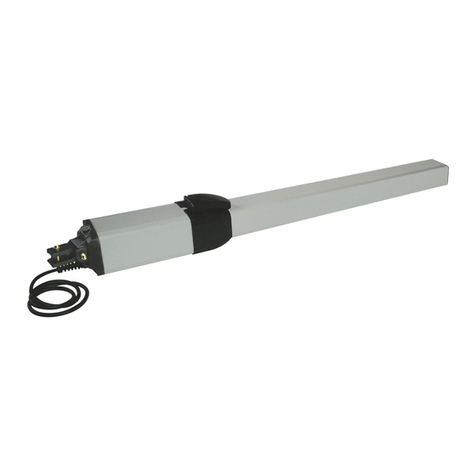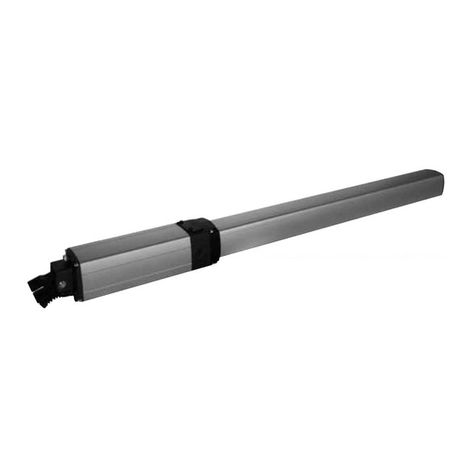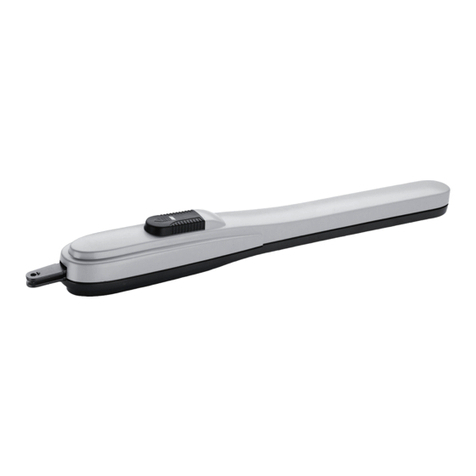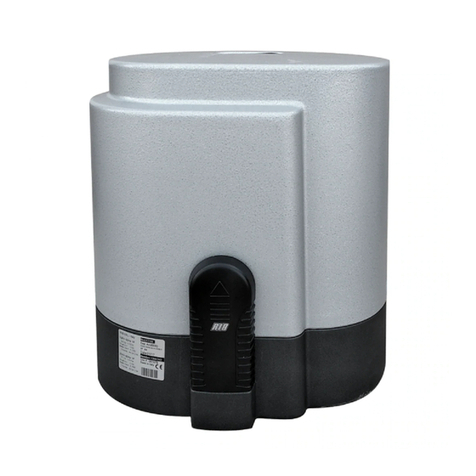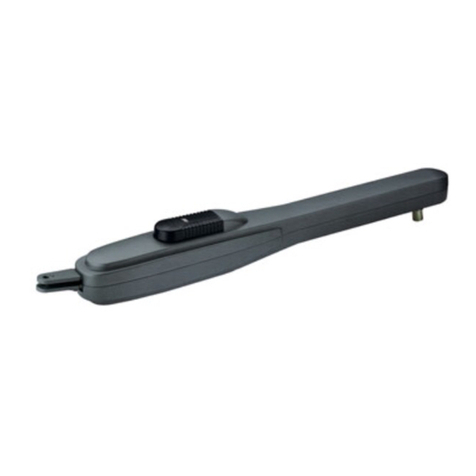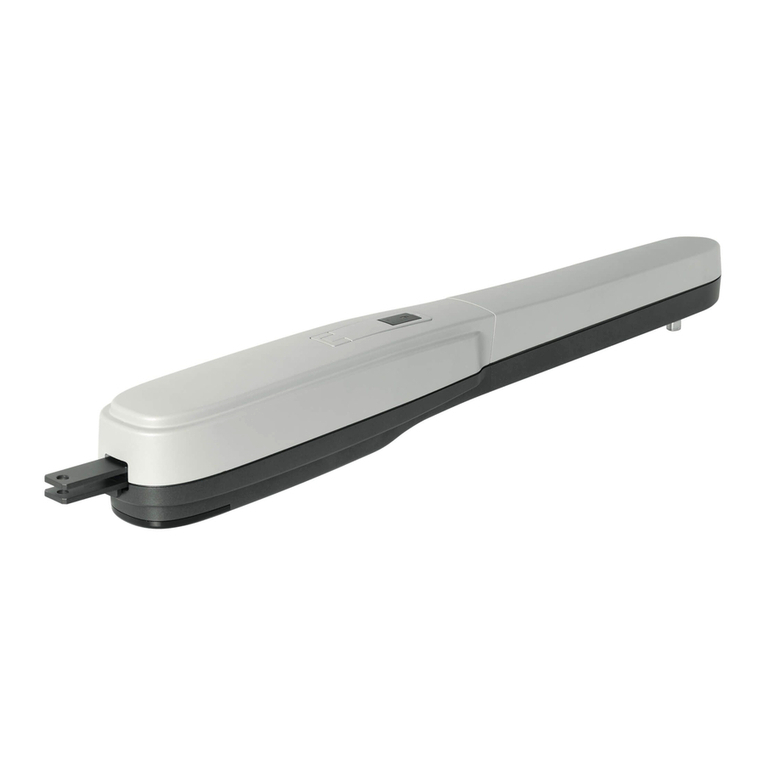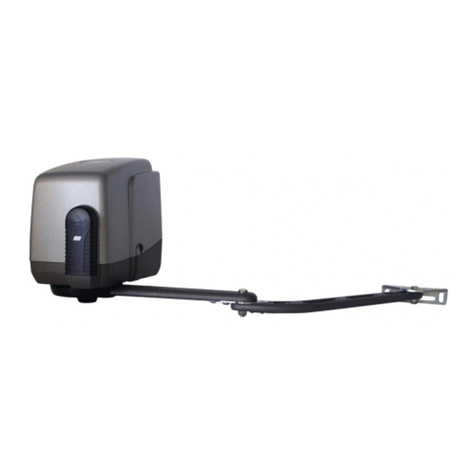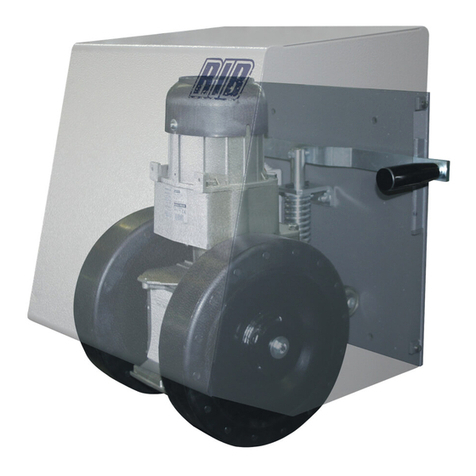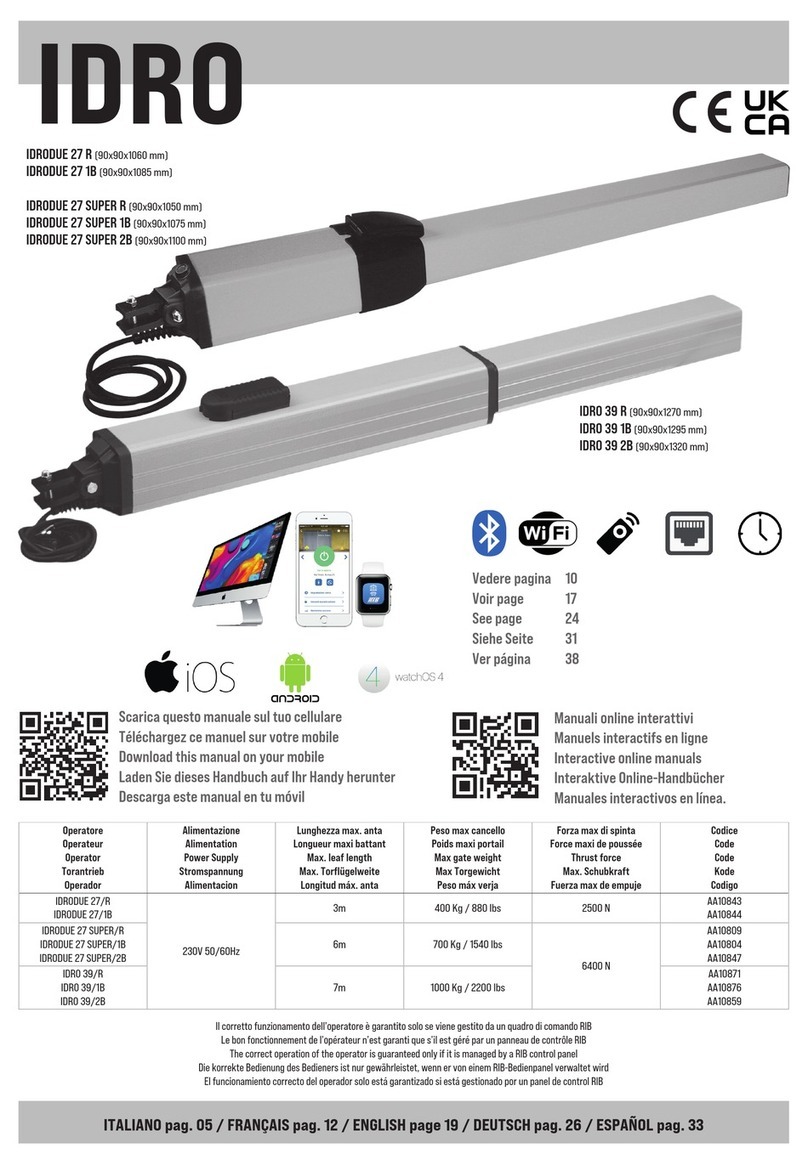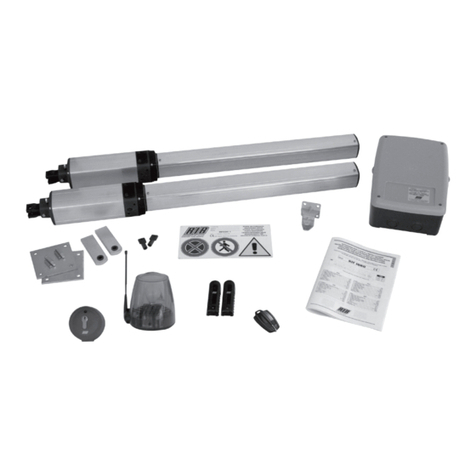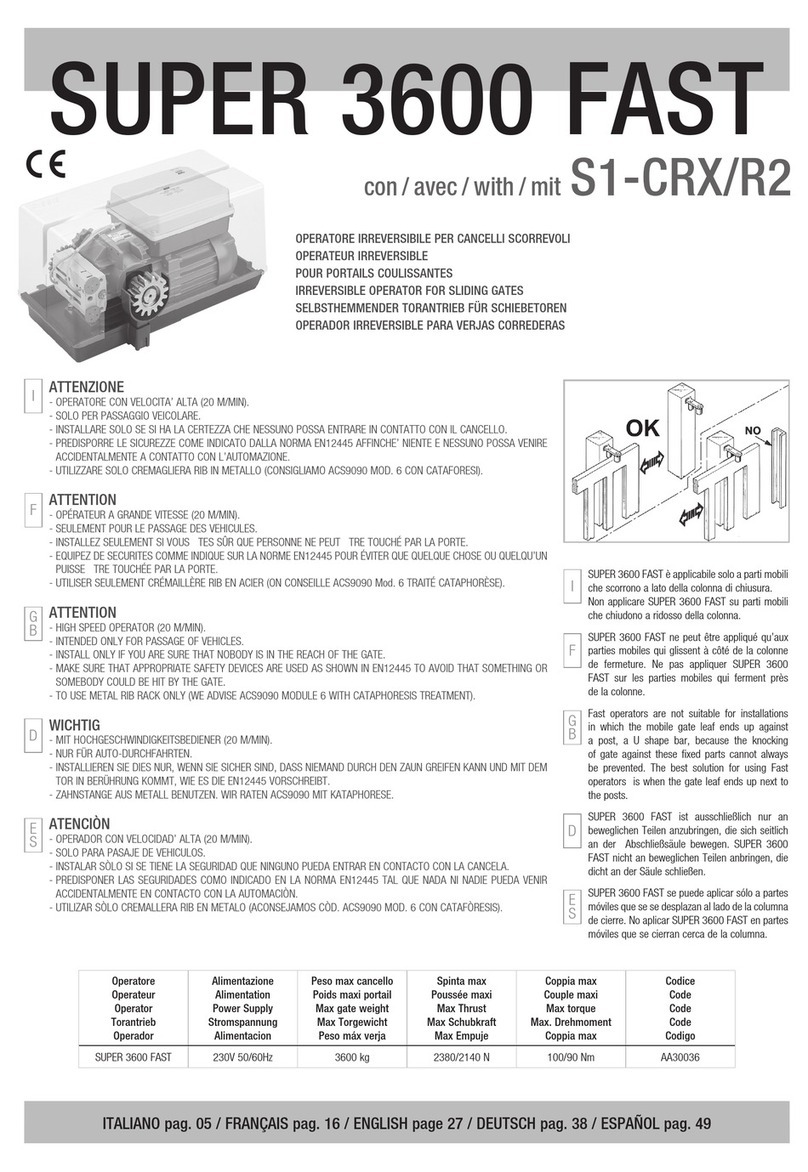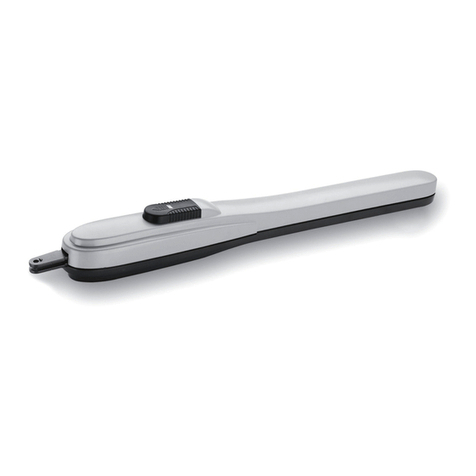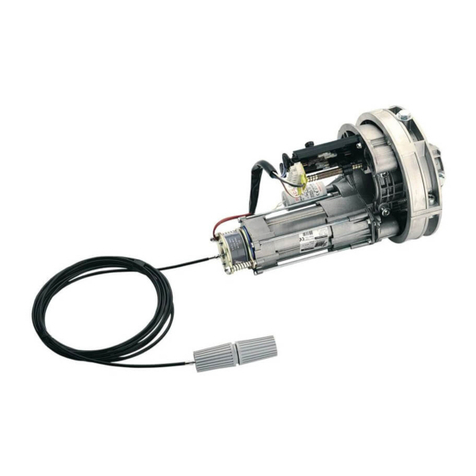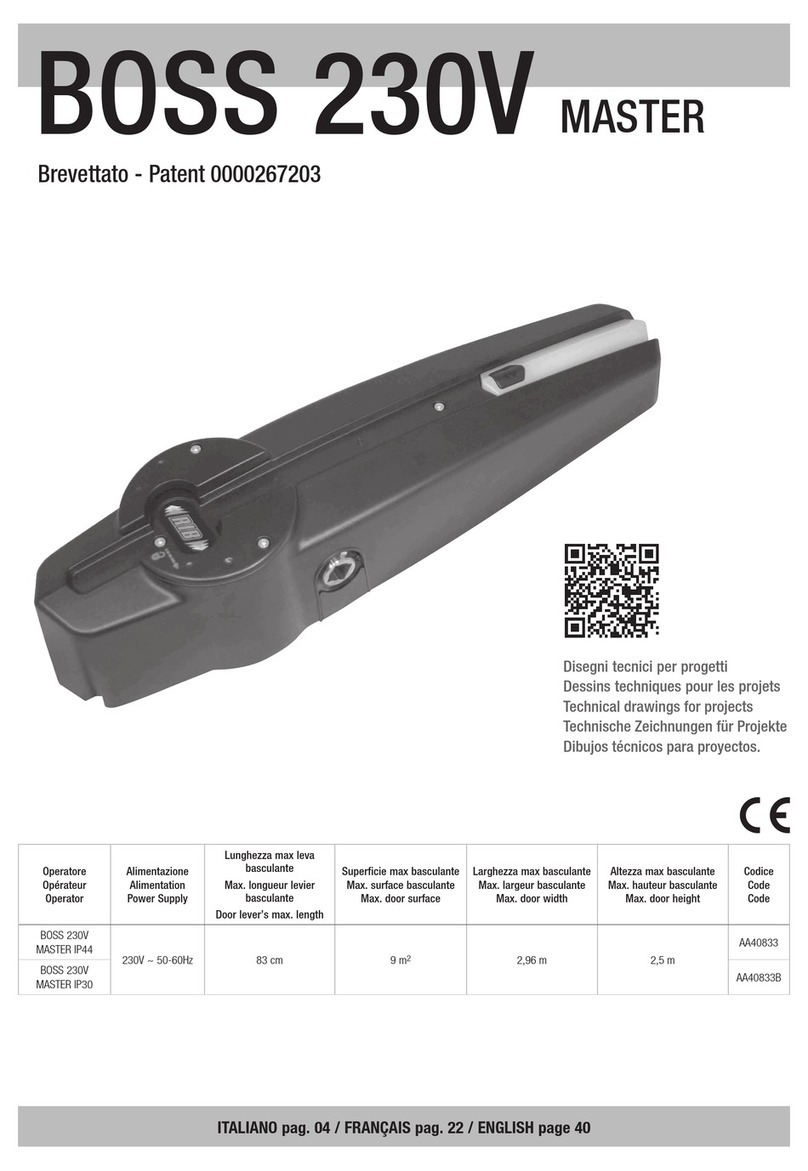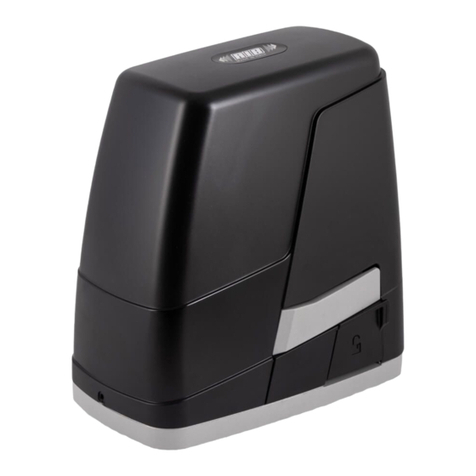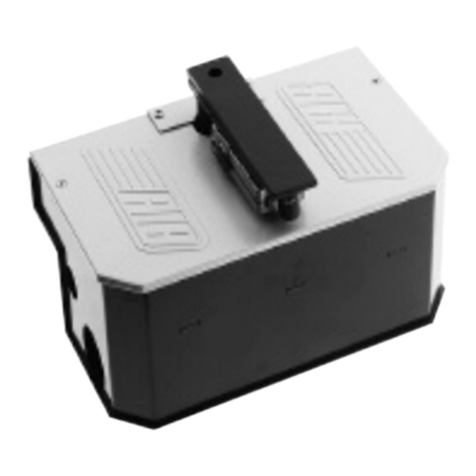
3
3
KEEP THESE INSTRUCTIONS WITH CARE
1° - Install a thermal magnetic switch (omnipolar, with a minimum
contact opening of 3 mm) before the control board, in case this is
not provided with it. The switch shall be guaranteed by a mark of
compliance with international standards. Such a device must be
protected against accidental closing (e.g. Installing it inside the
control panel key locked container).
2° - As far as the cable section and the cable kind are concerned,
RIB suggests to use an H05RN-F cable, with a minimum section
of 1,5mm2, and to follow, In any case, the IEC 364 standard and
Installation regulations In force In your Country.
3° - Positioning of an eventual pair of photocells: The beam of the
photocells must be at an height not above the 70 cm from the
ground, and, should not be more than 20 cm away from the axis
of operation of the gate (Sliding track for sliding gate or door, and
the hinges for the swing gate). In accordance with the point 7.2.1
of EN 12445 their correct functioning must be checked once the
whole installation has been completed.
4° - In order to comply with the limits defined by the EN 12453 norm,
if the peak force is higher than the limit of 400N set by the norm,
it is necessary to use an active obstacle detection system on
the whole height of the gate (up to a maximum of 2,5m) - The
photocells in this case must be apply externally between the
colums and internally for all the race of the mobil part every
60÷70cm for all the height of the column of the gate up to a
maximum of 2,5m (EN 12445 point 7.3.2.1). example: column
height 2,2m => 6 copies of photocells - 3 internal and 3 external
(better if complete of syncronism feature - FIT SYNCRO with TX
SYNCRO).
N.B.: The system must be grounded
Data described by this manual are only Indicative and RIB reserves
to modify them at any time. Install the system complying with current
standards and regulations.
FOLLOW ALL INSTALLATION INSTRUCTIONS
1° - This handbook is exclusively addressed to the specialized
personnel who knows the constructive criteria and the protection
devices against the accidents for motorized gates, doors and
main doors (follow the standards and the laws in force).
2° - The installer will have to issue to the final user a handbook in
accordance with the EN 12635.
3° - Before proceeding with the installation, the installer must forecast
the risks analysis of the final automatized closing and the safety
of the identified dangerous points (following the standards EN
12453/EN 12445).
4° - The wiring harness of the different electric components external to
the operator (for example photoelectric cells, flashlights etc.) must
be carried out according to the EN 60204-1 and the modifications
to it done in the point 5.2.2 of the EN 12453.
5° - The possible assembly of a keyboard for the manual control of the
movement must be done by positioning the keyboard so that the
person operating it does not find himself in a dangerous position;
moreover, the risk of accidental activation of the buttons must be
reduced.
6° - Keep the automatism controls (push-button panel, remote control
etc.) out of the children way. The controls must be placed at a
minimum height of 1,5mt from the ground and outside the range
of the mobile parts.
7° - Before carrying out any installation, regulation or maintenance
operation of the system, take off the voltage by operating on the
special magnetothermic switch connected upstream it.
THE RIB COMPANY DOES NOT ACCEPT ANY RESPONSIBILITY
for possible damages caused by the non observance during the
installation of the safety standards and of the laws in force at present.
IMPORTANT SAFETY INSTRUCTIONS FOR
THE INSTALLATION
- ATTENTION -
FOR THE SAFETY OF THE PEOPLE IT IS IMPORTANT TO
FOLLOW ALL THE INSTRUCTIONS.
INSTALLATIONSVORSCHRIFTEN BEACHTET WERDEN
1° - Wenn nicht bereits an der elektrischen Schaltzentrale vorgesehen,
muss vor der Schaltzentrale ein thermomagnetischer Schalter
installiert werden (omnipolar, mit einer minimalen Kontaktöffnung
von 3 mm), der ein von den internationalen Normen anerkanntes
Konformitätszeichen besitzt. Solch ein Geraet muss vor
Vandalismus geschuetzt werden(z.B.mit einen Schluesselkatsten
in einem Panzergehaeuse)
2° - RIB empfiehlt den Kabeltyp H05RN-F mit einem minimalen
Querschnitt von 1,5mm2 generell sollten die Normative
IEC 364 und alle anderen geltenden Montagenormen des
Bestimmungslandes eingehalten werden.
3°- Position des ersten paar Fotozellen: Der sollten nicht hoeher als
70cm vom Boden sein, und sollte nicht mehr als 20 cm entfernt
von der Achse des Tores sitzen (das gilt fuer Schiebe und
Drehtore). In Übereinstimmung mit dem Punkt 7.2.1 der EN 12445
Norm, ihr korrektes Funktionieren muß einmal überprüft werden.
4°- In Einklang mit der Norm EN12453, ist es bei Toren notwendig
eine komplette Sicherheitslieiste zu installieren, bei denen
mehr als 400N Kraft aufgewand werden muessen, um das Tor
zum anhalten zu bringen (Maximum von 2,5m anwenden) -
Die Fotozellen müssen in diesem Fall sein beantragen außen
zwischen den colums und innerlich das ganzes Rennen des mobil
Teils jede 60÷70cm für die ganze Höhe der Spalte des Gatters bis
zu einem Maximum von 2,5m - EN 12445 Punkt 7.3.2.1). Beispiel:
Spalte Höhe 2,2m => 6 Kopien von Fotozellen - 3 intern und 3
extern (besser, wenn komplett von der syncronism Eigenschaft -
FIT SYNCRO mit TX SYNCRO).
ANMERKUNG: Die Erdung der Anlage ist obligatorisch
Die in diesem Handbuch aufgeführten Daten sind ausschließlich empfohlene
Werte. RIB behält sich das Recht vor, das Produkt zu jedem Zeitpunkt zu
modifizieren. Die Anlage muss in Übereinstimmung mit den gültigen Normen
und Gesetzen montiert werden.
ALLE INSTALLATIONSANLEITUNGEN BEFOLGEN
1° - Diese Betriebsanleitung dient ausschließlich dem
Fachpersonal, welche die Konstruktionskriterien und die
Sicherheits-Vorschriften gegen Unfälle für Tore, Türen und
automatische Tore kennt (geltende Normen und Gesetze
beachten und befolgen).
2° - Der Monteur muss dem Endkunde eine Betriebsanleitung in
Übereinkunft der EN12635 überreichen.
3° - Vor der Installierung muss für die automatische Schließung
und zur Sicherheitsgewährung der identifizierten kritischen
Punkte, eine Risiko Analyse vorgenommen werden mit der
entsprechenden Behebung der identifizierten, gefährlichen
Punkte. (die Normen EN 12453/EN 12445 befolgend).
4° - Die Verkabelung der verschiedenen externen elektrischen
Komponenten zum Operator (z.B. Fotozellen, Blinker etc.) muss
nach EN 60204-1 ausgeführt werden, Änderungen davon nach
Punkt 5.2.2 der EN 12453.
5° - Die eventuelle Montage einer Schalttafel für den manuellen
Bewegungsbefehl muss so angebracht werden, dass der
Benutzer sich nicht in einer Gefahrenzone befindet, und dass,
das Risiko einer zufälligen nicht gewollten Aktivierung von
Schaltern gering ist.
6° - Alle Steuerungselemente (Schalttafel, Fernbedienung etc.)
gehören nicht in Reichweite von Kindern. Die Kommandos
müssen min. 1,5 m ab Boden und außerhalb des Aktionsbereiches
der mobilen Teile angebracht werden.
7° - Vor jeglichem Eingriff, sei es Installation, Regulation oder
Wartung der Anlage, muss vorher die Stromzufuhr unterbrochen
werden, den dafür bestimmten Magnetthermo-Schalter drücken,
der am Eingang der Anlage installiert ist.
DIE FIRMA RIB ÜBERNIMMT KEINE VERANTWORTUNG für eventuelle
Schäden, die entstehen können, wenn die Installierungsvorschriften die den
gültigen Sicherheitsnormen entsprechen, nicht eingehalten werden.
WICHTIGE SICHERHEITS ANLEITUNGEN
FÜR DIE INSTALLATIONEN
- ACHTUNG -
FÜR DIE SICHERHEIT DER PERSONEN IST ES WICHTIG,
DASS ALLE ANWEISUNGEN GENAU AUSGEFÜHRT WERDEN
G
BD






